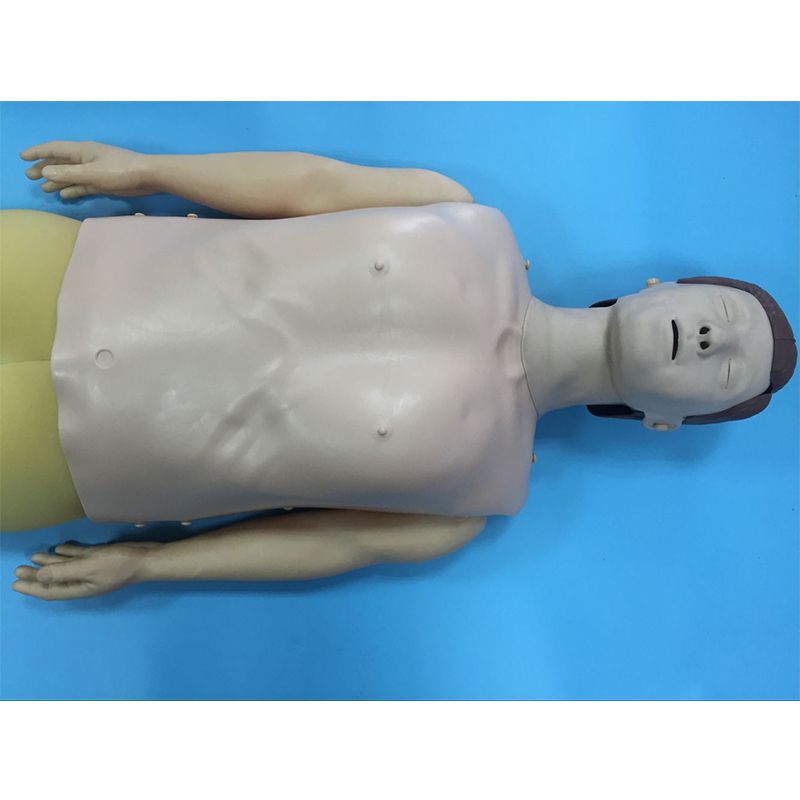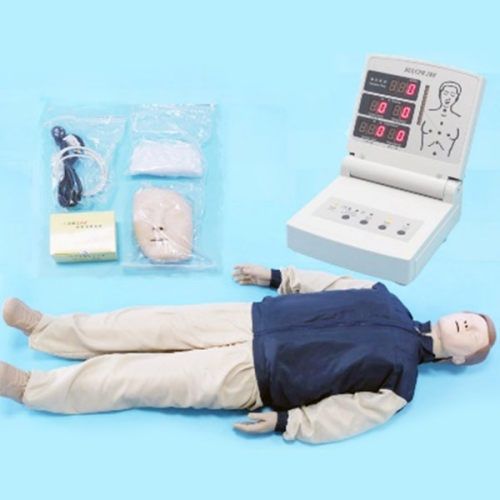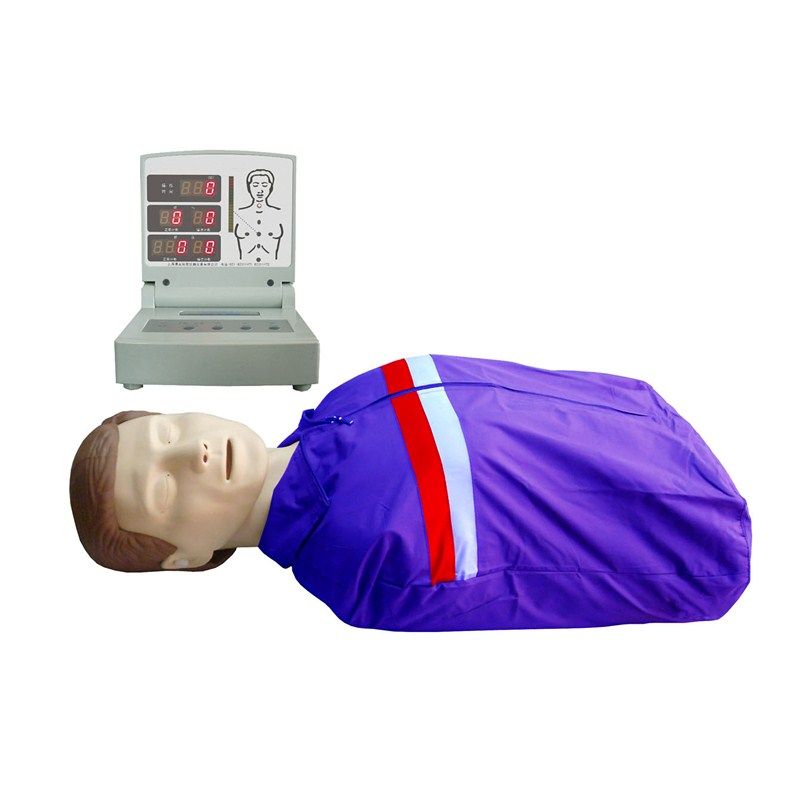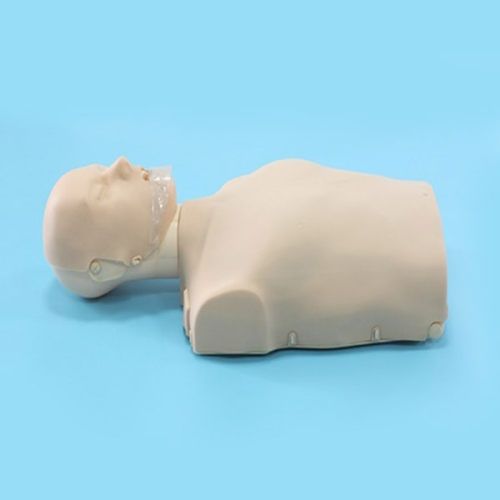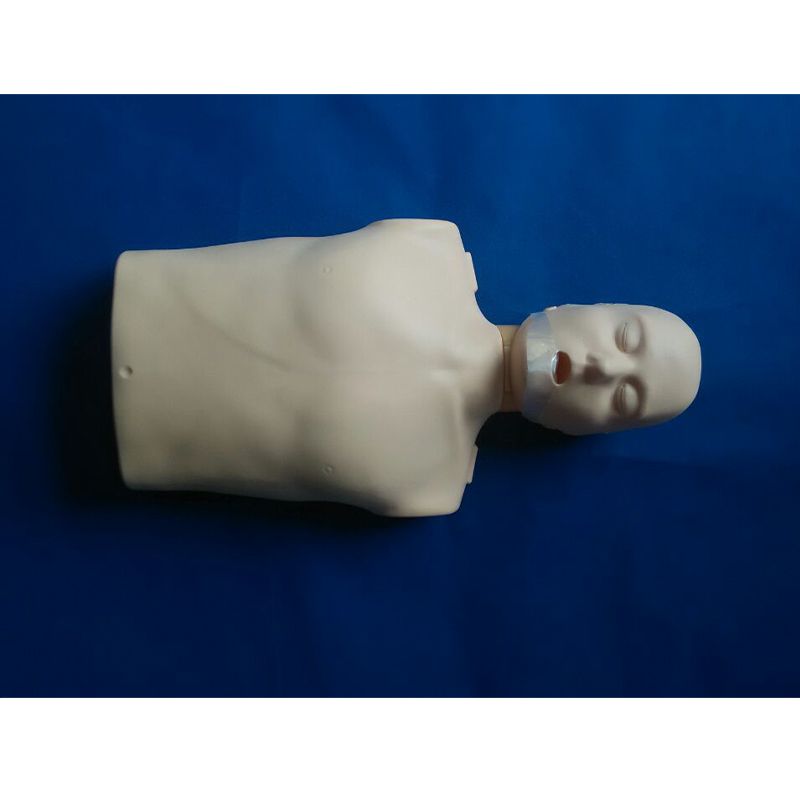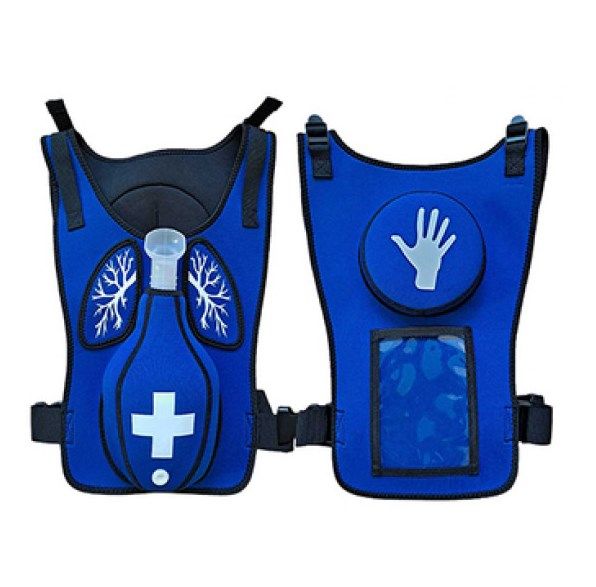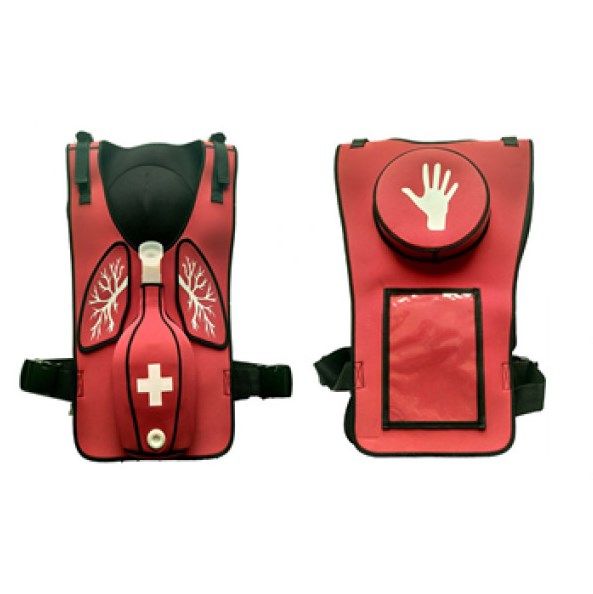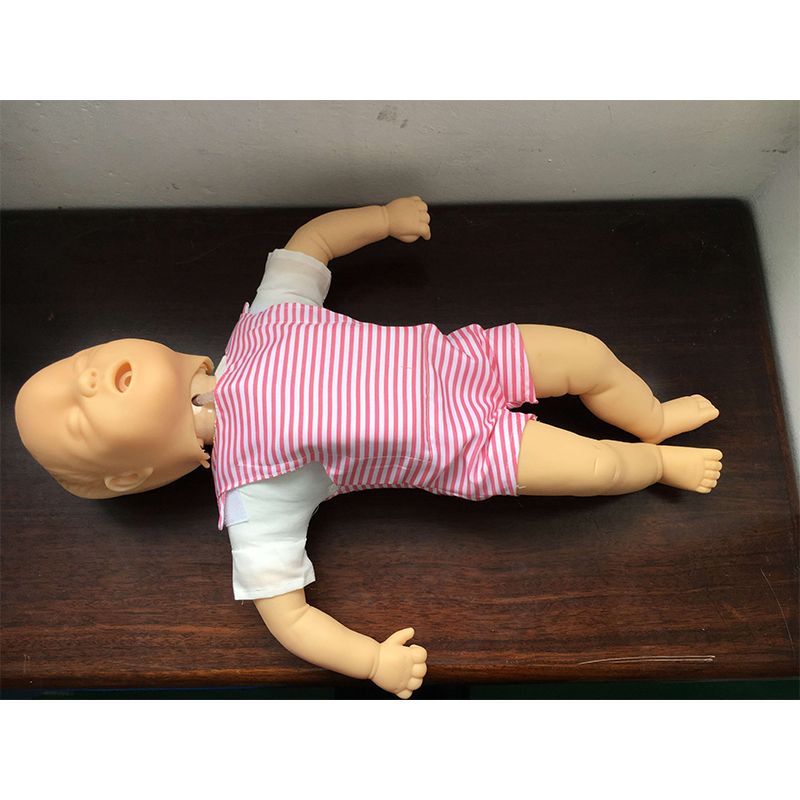Cardiopulmonary Resuscitation (CPR) is a critical skill that can mean the difference between life and death in emergencies. Effective CPR training is essential for individuals to confidently and competently perform this life-saving technique. One indispensable tool in CPR training is the CPR training manikin. This article provides a comprehensive guide to choosing the right CPR training manikin, considering various factors that cater to different training needs.
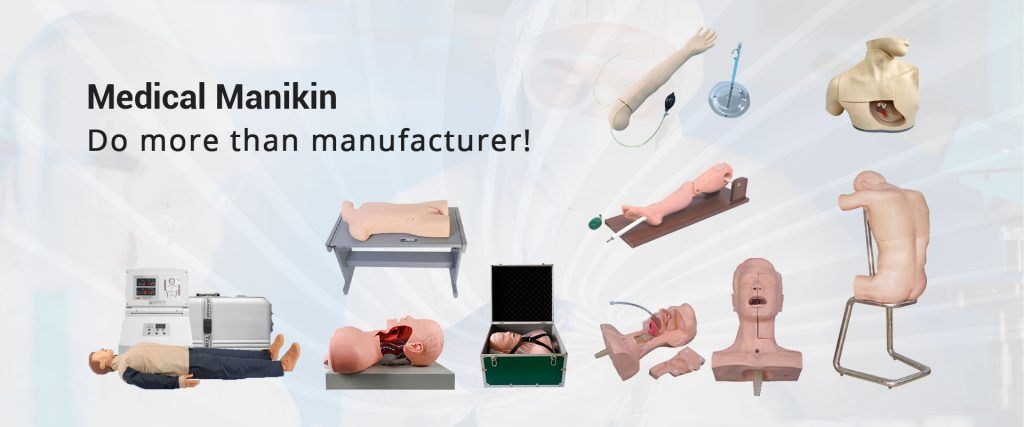
Why We Use CPR Training Manikins?
CPR (Cardiopulmonary Resuscitation) training manikins are used for various reasons in training scenarios related to emergency response and life-saving techniques. Here are some key reasons why CPR training manikins are essential:
Role of Manikins in Improving CPR Training
Skill Development: CPR training manikins allow individuals to practice and develop the necessary skills for performing CPR. These manikins are designed to closely simulate the human body, providing a realistic training experience.
- Correct Technique: Proper technique is crucial in CPR to maximize the chances of successfully resuscitating a person in cardiac arrest. Training manikins help individuals learn and practice the correct hand placement, compression depth, and rate for effective chest compressions.
- Muscle Memory: Performing CPR correctly requires muscle memory, and repeated practice on a manikin helps individuals develop and reinforce this memory. This is especially important in high-stress situations where quick and accurate responses are crucial.
- Feedback and Monitoring: Some CPR training manikins come equipped with feedback mechanisms that can provide information on the depth and rate of compressions. This real-time feedback helps learners understand how well they are performing and allows instructors to provide guidance for improvement.
- Simulation of Real-life Scenarios: Training manikins can be used in simulated scenarios that mimic real-life emergencies. This allows individuals to practice CPR in a controlled environment, helping them become more confident and competent in responding to cardiac emergencies.
Limitations of Traditional Training Methods
Traditional CPR training methods often involve theoretical instruction and demonstrations without the practical experience gained through hands-on practice. This can result in a lack of confidence and proficiency when individuals are faced with real emergencies. CPR training manikins address this limitation by providing a lifelike and interactive training experience, bridging the gap between theoretical knowledge and practical application.
In summary, CPR training manikins are valuable tools for improving the readiness of individuals to respond to cardiac emergencies. They provide a safe and effective means of practicing essential skills, receiving immediate feedback, and fostering confidence in performing CPR. However, it’s essential to recognize their limitations and complement training with ongoing education, realistic simulations, and real-world experience to enhance overall preparedness.
What are the Types of CPR Training Manikins?
CPR training manikins can be classified based on various factors, including their design, features, and purpose. Here are some common classifications of CPR training manikins:
1. Basic vs. Advanced:
Basic CPR Manikins: These are designed for fundamental CPR training and may include features like realistic chest compression and ventilation feedback.
Advanced CPR Manikins: Equipped with additional features such as electronic monitoring systems, feedback on compression quality, and options for advanced life support skills practice.

2. Age-Specific:
Adult CPR Manikins: Simulate the anatomy and size of an adult human for training in CPR techniques for adults.
Child and Infant CPR Manikins: Specifically designed to mimic the size and anatomy of children and infants for pediatric CPR training.
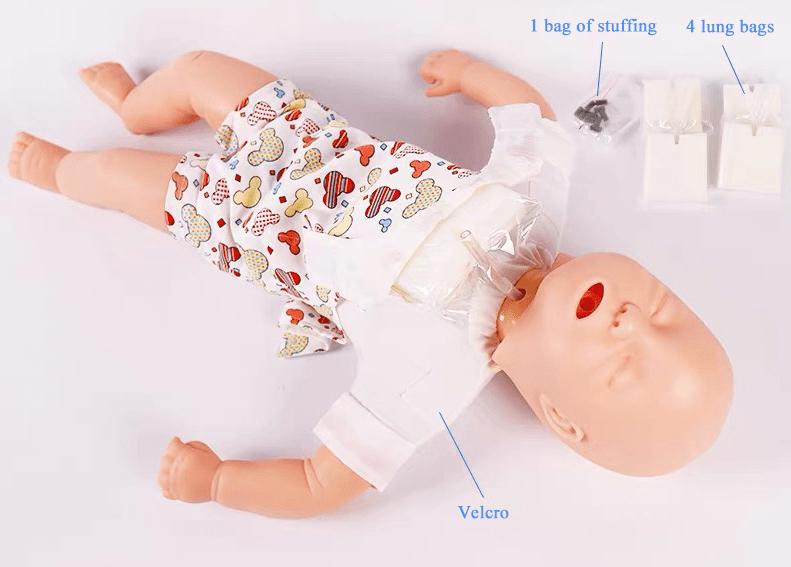
3. Feedback-Enabled:
Manikins with Feedback Systems: Include sensors and technology to provide real-time feedback on the quality of CPR performance. Feedback may focus on compression depth, rate, and other factors.
4. Compression-Only vs. Full CPR:
Compression-Only CPR Manikins: Emphasize training in chest compressions only, which is suitable for individuals who may not be trained in full CPR techniques.
Full CPR Manikins: Allow practice of both chest compressions and rescue breaths.
5. High-Fidelity Simulators:
Simulator-Based Manikins: Combine advanced manikins with computer simulation technology to create realistic and interactive training scenarios. These may be used for a wide range of medical emergencies.
6. Disposable vs. Reusable:
Disposable CPR Manikins: Intended for single-use or limited use and are often more cost-effective.
Reusable CPR Manikins: Designed for multiple uses, allowing for long-term training with proper maintenance. Scopelab CPR Manikins are made of PVC materials so can be used many times.
7. BLS vs. ALS:
Basic Life Support (BLS) Manikins: Geared towards training in basic CPR skills, suitable for laypersons and healthcare providers.
Advanced Life Support (ALS) Manikins: Include features for training in advanced techniques, such as intubation, defibrillation, and other advanced medical interventions.
8. Torso-Only vs. Full-Body:
Torso-Only Manikins: Include the upper body and chest for practicing chest compressions and ventilation.
Full-Body Manikins: Simulate the entire human body, providing a more comprehensive training experience and allowing for the practice of additional skills.
When choosing a CPR training manikin, it’s important to consider the specific training needs, audience, and the level of realism and feedback desired for the training program. Additionally, adhering to industry standards and guidelines for CPR training is essential to ensure effective and accurate skill development.

How to Choose the Right CPR Training Manikin?
Choosing the right CPR training manikin involves considering several factors:
- Training Goals: Determine the specific training goals and level of realism required.
- Budget: Consider the budget constraints and choose a model that provides the best value for the investment.
- Features: Assess the features offered by different models, including feedback mechanisms, airway management capabilities, and compatibility with training accessories.
- Durability: Ensure that the chosen manikin is durable enough to withstand frequent and rigorous training sessions.
- Supplier Reputation: Select a reputable CPR training manikin supplier with a track record of providing high-quality and reliable products.
Conclusion
In conclusion, CPR training manikins are indispensable tools in the development of life-saving skills. The choice of the right manikin depends on various factors, including the training goals, budget, and desired features. By considering these factors and asking the right questions, individuals and training programs can ensure they select the most suitable CPR training manikin for their needs. Remember, a well-informed decision not only enhances the training experience but also contributes to better-prepared responders in real-life emergencies. When in doubt, consulting with a trusted CPR training manikin supplier can provide valuable insights and assistance in making the right choice for effective and realistic CPR training.
